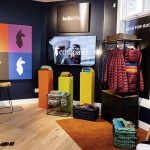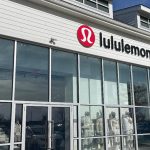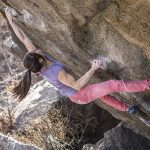At a recent Patagonia press conference, former company CEO Michael Crooke issued a call to action for the outdoor industry. He made one simple request — take a leadership role in corporate responsibility. Many outdoor companies are involved in different social and environmental programs, and many of these are also some of the most successful in their respective categories, supporting the assertion that profitability and activism can — and do — work together to make a healthier market.
Making an effort in environmental or social activism usually doesnt accomplish much unless a company is truly motivated to make a difference and has a personal involvement, at every level, in the initiative. Many companies integrate their environmental message into their branding message Patagonia will forever be associated with recycling; prAna is working to create the same association with wind power; Timberland is known for their public service initiatives; The North Face is known for their Himalayan social programs. All of these companies have integrated these initiatives into the fabric of their corporate structure. These marketing efforts are all unique in their own right, and they all have successfully promoted a cause, as well as associating the individual brands with that cause.
While these and many other outdoor companies are making a substantial effort to give back to the community in some way or another, there is a growing concern in the industry about “green-washing” and the prevalence of “pay-to-play” programs that highlight an organizations environmental stewardship, regardless of its track record or effectiveness.
There are many companies with many different environmental and social initiatives, and a few have stepped out beyond the outdoor industry and created an awareness that reaches into every corner of the consumer marketplace. Perhaps one of the most powerful examples of an outdoor company influencing the broader consumer market is Nikwaxs recent partnership with Siemens to produce a better washing machine. The partnership not only created a machine that is designed specifically to apply Nikwax waterproofing products, but also produced a machine that uses up to 75% less water than traditional top-load machines. This initiative has broader implications for Nikwax and the industry in general.
With a large appliance company showing its dedication to the outdoor lifestyle by producing and marketing a product specifically for outdoor recreation, Siemens is setting a great example of conservation and recreation working in tandem to open new markets and create new business opportunities. More importantly, Nikwax created a strategic partnership to support causes that the company believed in — conservation and outdoor recreation.
prAna is stepping up their efforts as well with their recent wind power initiative. Many companies are using wind power for their own needs, but Beaver Theodosakis, prAnas founder and president, is taking it a step further and offering this clean, renewable energy source to his retailers. The company started their program just before the 2005 OR Summer Market and has been expanding it since as retailers embrace the idea. In this first phase, PrAna is helping retailers move toward climate-neutral operations by purchasing 6,000 megawatt hours (6 million kilowatt hours) in the form of renewable wind power energy that is expected to prevent the release of over 3.6 million pounds of carbon dioxide.
While this is a new initiative for prAna, the core of the project is aligned with the companys original marketing plan, with Theodosakis drawing a parallel between wind power and the word prAna, which means breath. Beginning this month, prAna will also be offsetting 100% of the electrical energy used at its Vista, Calif. headquarters and in the homes of all of its full-time employees. The companys goal is to be the first manufacturer of clothing “made with certified Green-e wind generated power.”
Much of the marketing at The North Face revolves around the companys sponsored athletes and expeditions, many of which involve third world countries. Because of their involvement in these impoverished areas, TNF has aligned itself with GlobalGiving, an organization founded by former World Bank executives that describes itself as the emerging marketplace for international aid. It directly connects social entrepreneurs in the developing world with individuals and institutions that have an interest in funding social and economic development projects. The programs funded by GlobalGiving help with medical and education facilities throughout the third world, including many of the destinations of TNFs athletes, such as Nepal, Chile, and India.
“GlobalGiving provides an exciting new opportunity that streamlines international aid,” said Letitia Ferrier, strategic marketing manager at The North Face. “Through this partnership, The North Face funding will go directly to high-impact development projects overseas. This allows us to directly give back to the communities and regions where we send our athletes to explore.”
Horny Toad is another outdoor industry member that has continuously taken the road less traveled when it comes to marketing its brand, and it is taking the same route with its social programs. Five years ago, Horny Toad partnered with Chicago-based Search Development Center and founded the Planet Access Company, described as “a social purpose enterprise.” The company employs disabled adults and offers a broad range of third-party logistics services including automated inventory management and order fulfillment services to mid-size entrepreneurs. It plays a key role in the operations of Horny Toad and other client companies, while providing paid work opportunities to Search Developmental Center program members.
“As our partnership with Planet Access Company continues to grow, evolve and thrive, it becomes more and more clear that its not just a good thing to do, its the right thing to do,” said Gordon Seabury, president of Horny Toad.
Recently, Planet Access has received national recognition from the NYU Sterns School of Business, for its innovative approach and success as a social enterprise a for-profit company that creates social good.
While all of these companies are all certainly providing strong social and environmental benefits, they have also aligned their branding efforts with their different initiatives and brought the causes into every level of their company. They have all gone beyond simply writing a check and plastering their logo on a banner. While cynics may call this self-promotion, it actually helps draw attention not only to the brand, but also to the cause. Aligning these various initiatives not only with the companies core values, but also with their core marketing effort is one of the reasons they are successful.
This was a primary topic of conversation at the Cause Marketing round table and panel discussion during the OIA Rendezvous. John Sterling, program director of the Conservation Alliance, referred to when he worked at Patagonia. He said that the first few years the company was involved with different environmental initiatives they didnt talk about it for fear of green-washing criticism. When Patagonia finally asked their beneficiary partners how to communicate their activity on the environmental front, their response was “loudly.”
When these communications channels are opened, it can help the issue or organization gain momentum with other organizations and with public awareness. The key to these communications efforts aside from ingraining corporate responsibility in a companys core values, is to focus on the results produced, not the size of the donation.















